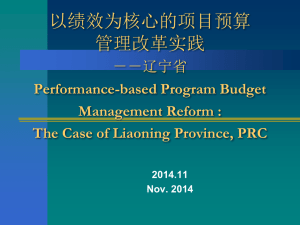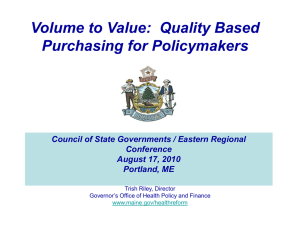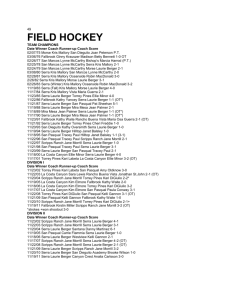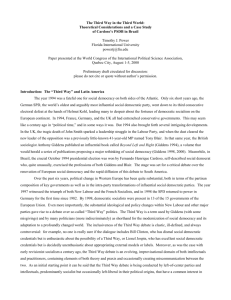Christopher Garman
advertisement
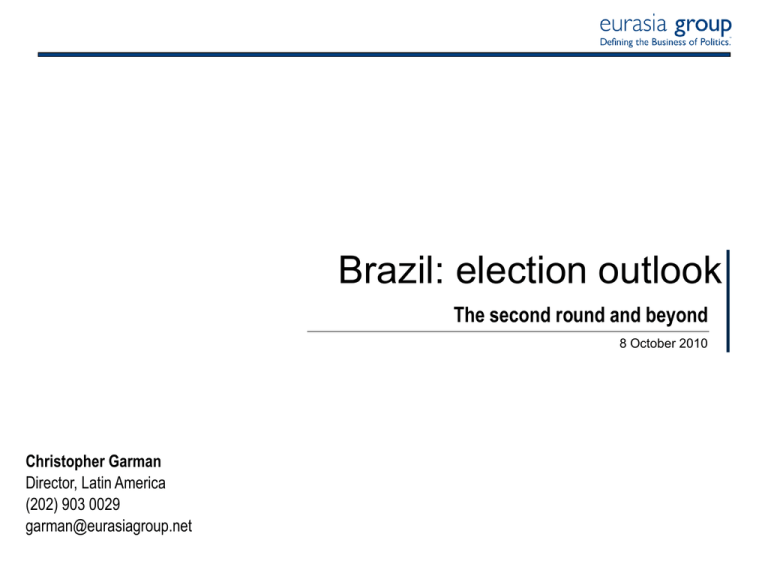
Brazil: election outlook The second round and beyond 8 October 2010 Christopher Garman Director, Latin America (202) 903 0029 garman@eurasiagroup.net Two messages: (1) The election will tighten, but Rousseff remains a heavy favorite (2) Next administration will be marked by a continuity, but there will be some positive and negative surprises 2 Probability of Victory for Government Candidate 100% 99.4% 90% 91.8% 87.1% 80% 70% 60% 50% 40% 41.6% 30.0% 30% 20% 10% 0% 2.6% Change Scenario Middling Scenario Succesor Continuity Scenario Incumbent Source: Clifford Young and Christopher Garman, “The Unpredictability of Pundits and Predictable Elections: Using public opinion to predict political disputes”, WAPOR, 12 May 2010. 3 First Round Valid Votes: Polls and Results 70.0 60.0 50.0 50.0 46.91 40.0 30.9 30.0 32.61 20.0 17.0 19.33 10.0 0.0 9/1-3/2010 Source: Datafolha, Ibope 9/14-9/15/2010 9/22/2010 9/26-27/2010 Rousseff Serra 29-Sep-10 10/2/2010 Results Silva 4 2nd Round Simulation and Marina Silva Voter Transfers 80 % transferred to Serra, 68.8% 70 60 56 55 57 56 70.0% 60.0% 55 53 52 52 50 40 80.0% 50.0% 36 36 35 39 38 35 40 39 30 40.0% % transferred to Rousseff, 31.3% 30.0% Source: Datafolha Rousseff Serra % transferred to Rousseff 2O ct -1 0 29 -S ep -1 0 28 -S ep -1 0 0.0% 23 -S ep -1 0 0 16 -S ep -1 0 10.0% 13 -S ep -1 0 10 3Se p10 20.0% 25 -A ug -1 0 20 % transferred to Serra 5 Voter Demands Social Class AB C DE Crime and Violence 50 49 53 Jobs 44 49 54 Healthcare 41 43 48 Eurasia Group is the world’s leading global political risk research and consulting firm. This presentation Drug Trafficking is intended solely for internal use by the recipient and is based 31on the opinions of Eurasia 37 Group 41 analysts and various in-country specialists. This presentation is not intended to serve as investment advice, and it makes no representations concerning the credit worthiness of any company. This Educationpresentation does not constitute an offer, or an invitation to offer, or a recommendation to enter into any 39 27 transaction. Eurasia Group maintains no affiliations with government or political parties. Low Salaries 15 21 20 14 10 © 2010 Eurasia Group, 475 Fifth Avenue, 14th floor, New York, New York 10017 Corruption 15 www.eurasiagroup.net 20 Source: Ipsos Public Affairs, September 2010 6 Congressional Election Results Chamber of Deputies Current Composition 2010 Election Results Party Left Parties PT PSB PDT PCdoB Centrist Parties PMDB PP PR PTB Opposition Parties PPS PV DEM PSDB 79 27 23 12 141 (27.5%) 88 34 28 15 165 (32.2%) 90 41 40 22 193 (37.6%) 79 41 41 21 182 (35.5%) 15 14 56 59 144 (28.1%) 12 15 43 53 123 (24.0 %) 35 (6.8%) 513 43 (8.4%) 513 Other Parties TOTAL Party Left Parties PT PSB PDT PCdoB Centrist Parties PMDB PP PR PTB Opposition Parties PPS PV DEM PSDB Senate Current+ Composition 2010 Election Results 8 2 6 1 17 (21.0%) 15 3 4 2 24 (29.6%) 17 1 4 7 29 (35.8%) 20 4 4 6 34 (42.0%) 0 1 13 16 30 (37.0%) 1 0 6 11 18 (22.2%) 5 (6.2%) 81 5 (6.2%) 81 Other Parties TOTAL 7 Two policy drivers that will shape the next administration The “challenge of abundance” • Politics fundamentally changes when the risk of insolvency is no longer a key concern for investors The learning curve on the left • Lessons learned in President Luiz Inacio Lula da Silva’s administration extend beyond low inflation – Greater appreciation for the bottlenecks for investments – The left has learned the up-side to developing deeper capital markets – Policymakers learn from the failures of the past (tax reform) 8 A mix of positive and negative surprises Macroeconomic Policy Outlook • Fiscal Policy: The government will signal a desire to roll back spending, have some mixed success, but fail to fully deliver • Exchange rate and monetary policy: Greater concern on FX appreciation, but less conflict within economic team Reform outlook • Structural reforms: Tax reform will be the positive surprise • Microeconomic reform agenda: Focus on hurdles to investments and deepening capital markets • Sector specific reform: Oil & gas, mining, utilities, telecommunications, and restrictions on foreign land purchases 9 Rousseff’s Reform Agenda Structural and Fiscal Reforms Probability Timing Tax Reform 60% First half 2013 Public Sector Payroll Cap 60% First half 2011 Public Sector Pension Reform 40% First half 2012 Microeconomic Reforms Probability Timing Positive Credit Bureau 60% First half 2011 Antitrust Legislation / Competition reform 70% Late 2010 to early 2011 Government procurement reform 70% First half 2011 Public Auditor (TCU) reform 50% First half 2012 Environmental Licensing 60% First half 2012 Foreign Asset Amnesty 40% Second half 2011 Sector Specific Reforms Probability Timing Oil Reform 80% Late 2010 to early 2011 Foreign Landownership Restrictions 60% First half 2011 or second half 2012 Mining Reform 60% First half 2013 Utility Reform 70% Second half 2011 10



